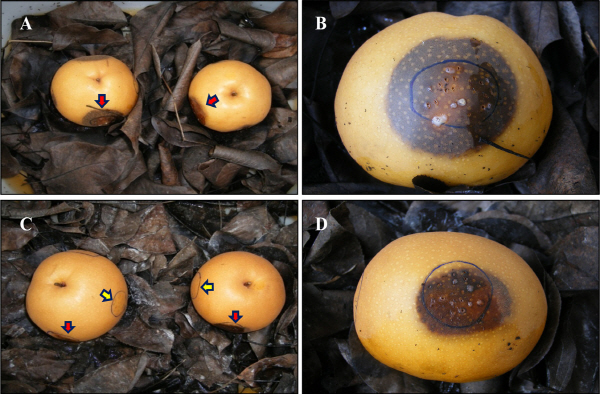Abstract
This study was conducted to examine changes in the fungal community on fallen leaves of pear by treatment with
lime sulfur. Although the lime sulfur could reduce the primary inoculum of several pathogens on spring season, the effect of
lime sulfur has not been well determined scientifically. Fallen leaves infected by pear diseases in pear orchards in Naju were
collected and treated with lime sulfur or water as a control. To determine the fungal diversity from each treatment, rDNA
internal transcribed spacer (ITS) regions were analyzed after extraction of fungal genomic DNA from lime sulfur-treated or
water-treated fallen leaves, respectively. The most common fungal species were Ascomycota and Basidiomycota in both treated
leaves. However, the population dynamics of several fungal species including
Acknowledgements
This study was financially supported by a grant from the Agenda project (PJ010197052015), Rural Development Administration, Republic of Korea.
Figures & Tables



